Best (& Worst) Games of 2021: Part One
#1
This list was a tough, tough fight. First of all, even the expansive list of games I'll talk about here are a mere fraction of the games I played in 2021. Many were left unfinished, but I still found them interesting enough to talk about.
I thought I had locked in my game of the year within the first couple of months. Nearly three quarters into the year, it was unseated by what is now the number two slot. And more recently, the number two slot was unseated yet again by this, the most stunning game I played all year: the queer visual novel Heaven Will Be Mine.

Heaven Will Be Mine is the standalone follow-up to another visual novel which a lot of my friends have played and enjoyed: We Know The Devil, a story about three queer characters who go to summer camp and encounter the Devil. We Know The Devil had a premise that didn't entice me, but when I heard that Heaven Will Be Mine was mostly about cute queer girls in mechs engaging in transhumanism, I couldn't start playing it fast enough. It's like if somebody made Neon Genesis Evangelion with lesbians.

Actually, it's even better than that. Heaven Will Be Mine is the story of three girls, at least two of whom are trans, who each act as key agents in a three-way galactic war. Humanity has abandoned Earth, and the galaxy's three main factions all have different ideas about how to proceed with life: return to Earth and embrace their humanity, escape to the stars and embrace a totally different type of nonhuman existence, or find a different sort of in-between existence which respects and remembers their past while still embracing a new future.
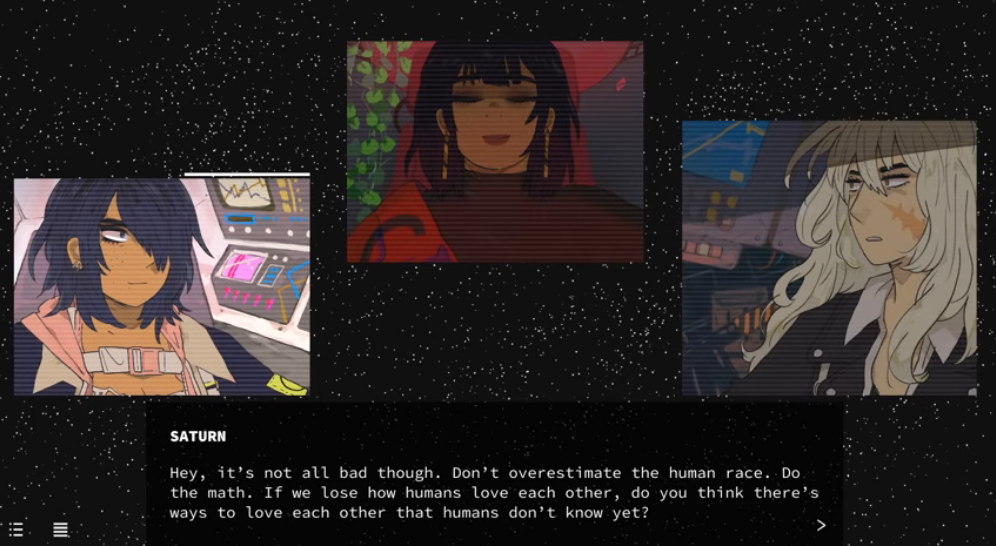
You play as one of the three girls (Luna-Terra, Saturn, or Pluto) and engage in conversations with the other girls in a visual novel format. During each conversation scene, you're given choices that influence the narrative towards one of four different endings, most of which favor a single faction but one of which is a happy medium between the three. There is emphatically not a canonical ending; even the most balanced one has a degree of uncertainty to it. There is also not a "correct" character to play as; any of the endings can be obtained with any of the playable characters.
That said, each character also has unique scenes, so there's substantial motivation to try playing as each girl. And I did; I played through the story multiple times to see all the scenes and outcomes, and to get to know each of the characters and their motivations better. This is the only game this year that I restarted as soon as I finished it - multiple times.
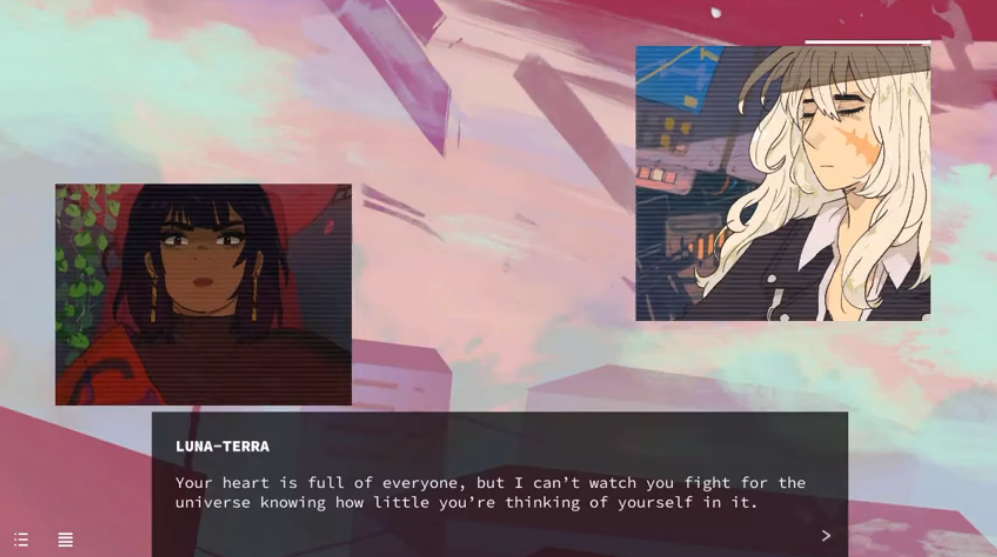
Even with that amazing premise, Heaven Will Be Mine could have been... just fine, a totally functional queer-girls-in-mechs story, and it probably still would have earned a slot on this list. But Heaven Will Be Mine actually changed me, just as much as the characters themselves are changed in the game. I saw aspects of myself echoed back to me via the characters of Heaven Will Be Mine, aspects that were sometimes painful to confront but that I needed to. These are aspects that could have led to the girls' downfall if any of them had been acting alone - but at the climax, the three characters always work together to lift each other up and build a future together.

My GOTY last year was Sayonara Wild Hearts, a game with minimal gameplay but with a story, aesthetic, and message that I really needed to hear in a difficult year. Heaven Will Be Mine is the same thing to me this year. It taught me that love can be more than a feeling: it can be a radical act. It helped me remember who it is that I want to be.
#2
While Heaven Will Be Mine was my favorite overall experience of the year, Deathloop had my favorite gameplay of the entire year. I didn't replay it immediately on finishing, because I had too much else to do and also I'd had a great experience in my first playthrough, but I strongly considered it. It was a fantastic game, and in many ways an ideal game for me.
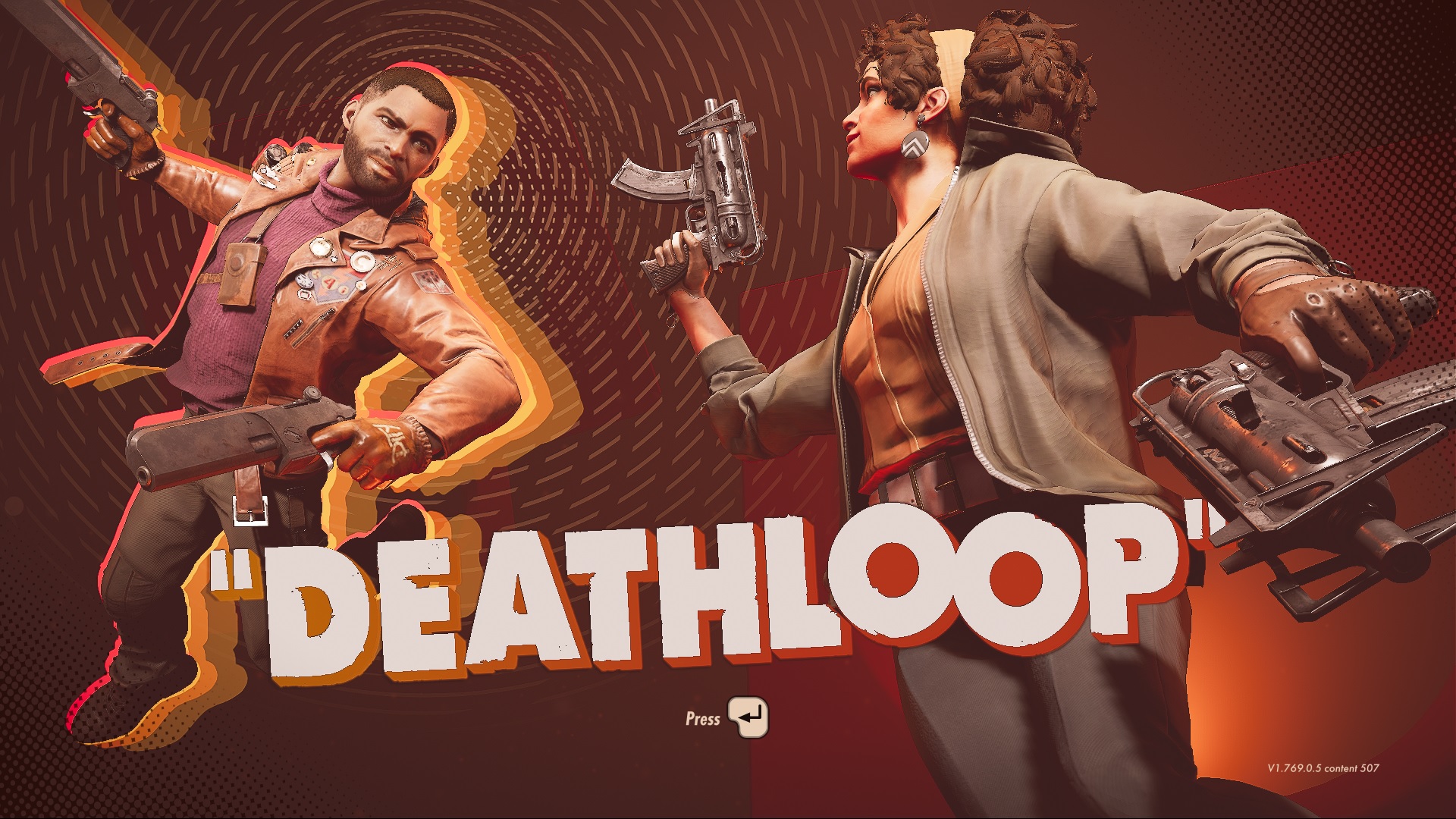
Now, Deathloop received widespread critical acclaim upon release, but discussion around the game quieted down pretty quickly. I'm pretty sure that's because Deathloop was not widely available to most people. Deathloop was released exclusively to the PS5, a notoriously difficult console to obtain, as well as the PC - and most gamers play on console. Being fortunate enough to own a PC that could run Deathloop, I picked it up on a whim towards the end of September, and was blown away.
The marketing for this game was pretty bad. For many months leading up to Deathloop's release, the central conceit and gameplay of Deathloop was not clear to me. It seemed to be a multiplayer PvP assassination game, but with time loops involved somehow? A few days before the game's release, reviews cleared things up: Deathloop is a single-player first person stealth assassination game, which has an optional multiplayer element. And I would have loved this to have been clear from the start! I've adored the Hitman games for years; playing Hitman as an FPS sounded amazing.
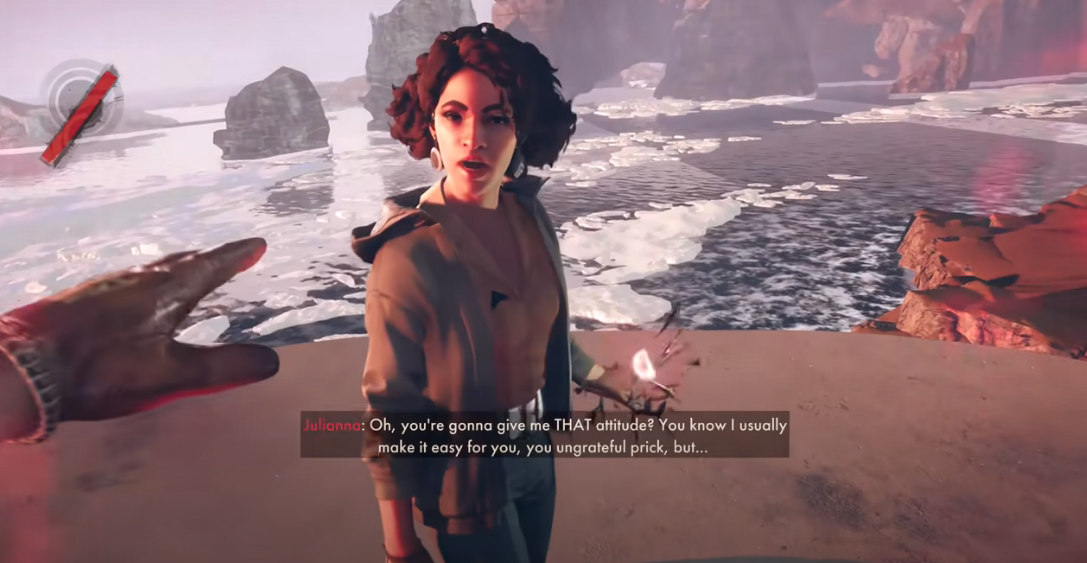
And it was! Deathloop is the story of one man, Colt Vahn, who find himself trapped on an island where a large number of people have decided to erect a time loop and party for the same day in perpetuity. Your goal as Colt is to run the loop as many times as it takes until you're able to assassinate all eight targets whose lives are tied to the time loop's existence; kill all eight, and you can break the loop and end the game.
That's the sort of premise that could seem very overwhelming, especially once I tell you that each day is broken up into four sections, and you have the option of traveling to one of four areas of the island for each island, and the targets move around between the various areas as the day progresses. But it's all right, because Arkane has designed the game to be pretty straightforward and relatively linear. Rather than strategizing the perfect series of kills like you might in Hitman, Deathloop lays out several sidequests called "leads," each of which teaches you how to alter the timeline just right to get your targets into the right places, so you can kill them all in a single run of the loop.

And once I learned about this, my initial worry was that Deathloop would be too linear. But it's actually a welcome bit of structure that kept me focused on a limited number of questlines, while still allowing a great degree of freedom regarding how I completed them. And there's still plenty of X-factors to keep the game interesting, like the various mooks you'll encounter, as well as the primary antagonist Julia who sometimes shows up to hunt you and completely wreck your plans.
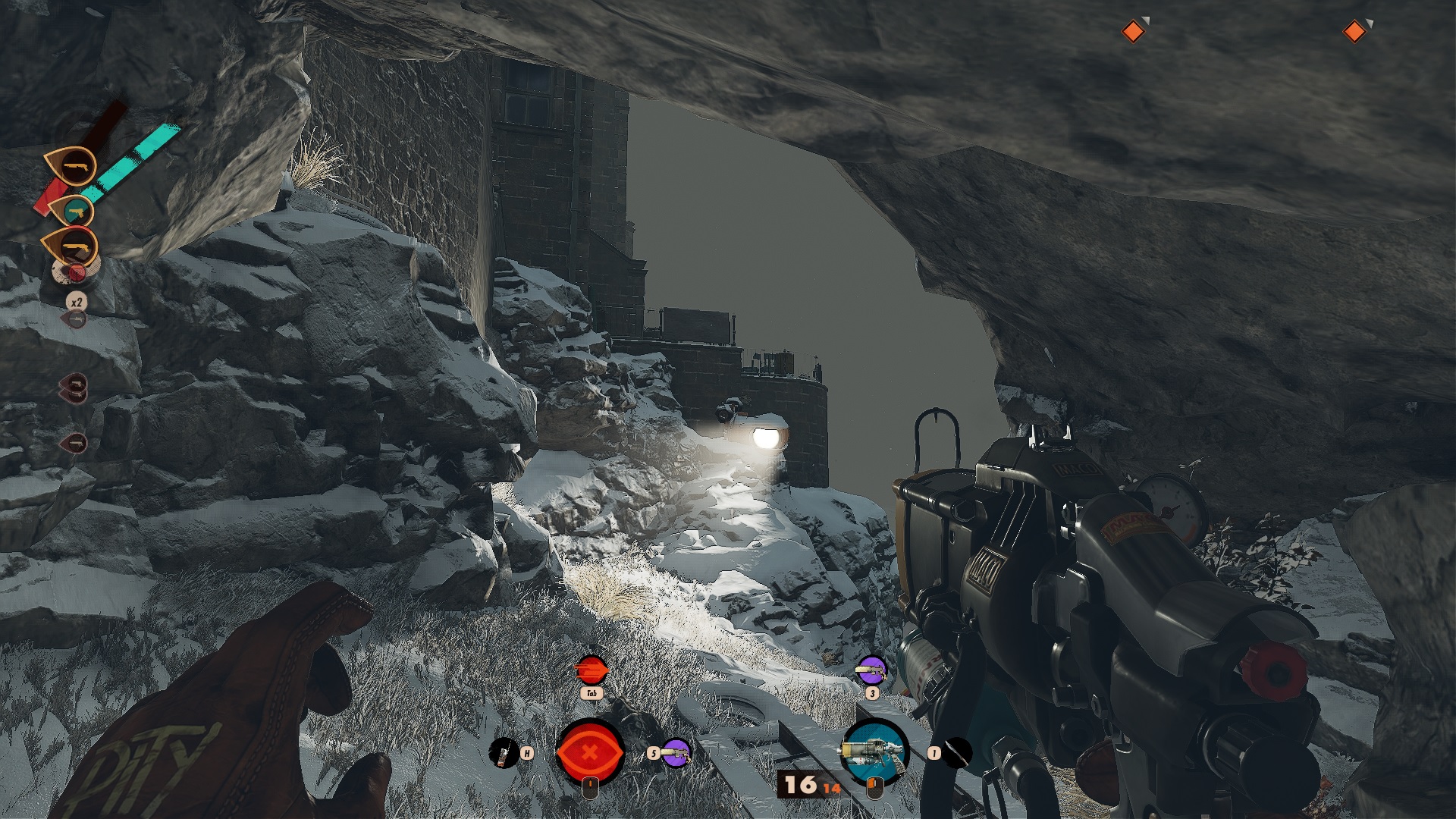
Deathloop is an extremely playable game. I generally felt like I had a manageable number of tools, but a large sandbox with which to play with them. There's plenty of hidden secrets and a few optional questlines that I was never actually able to finish. And the story does end very abruptly when you finish the game (a point of contention among players), but I found that the story drove the gameplay as much as it needed to and no more. This was an extremely fun world to explore; I especially loved how a mid-afternoon blizzard transformed the world into a quiet peaceful snowscape. I loved uncovering all the game's secrets, getting to know the characters and the locations, and having my own little world to feel a little bit safe in.
#3
So, my twice-dethroned GOTY still retains the title of my favorite sandbox of the year. Hitman 3 is an incredible achievement, both as a standalone element of a fantastic trilogy, and also as a complete package that includes all 25 levels of the World of Assassination trilogy.
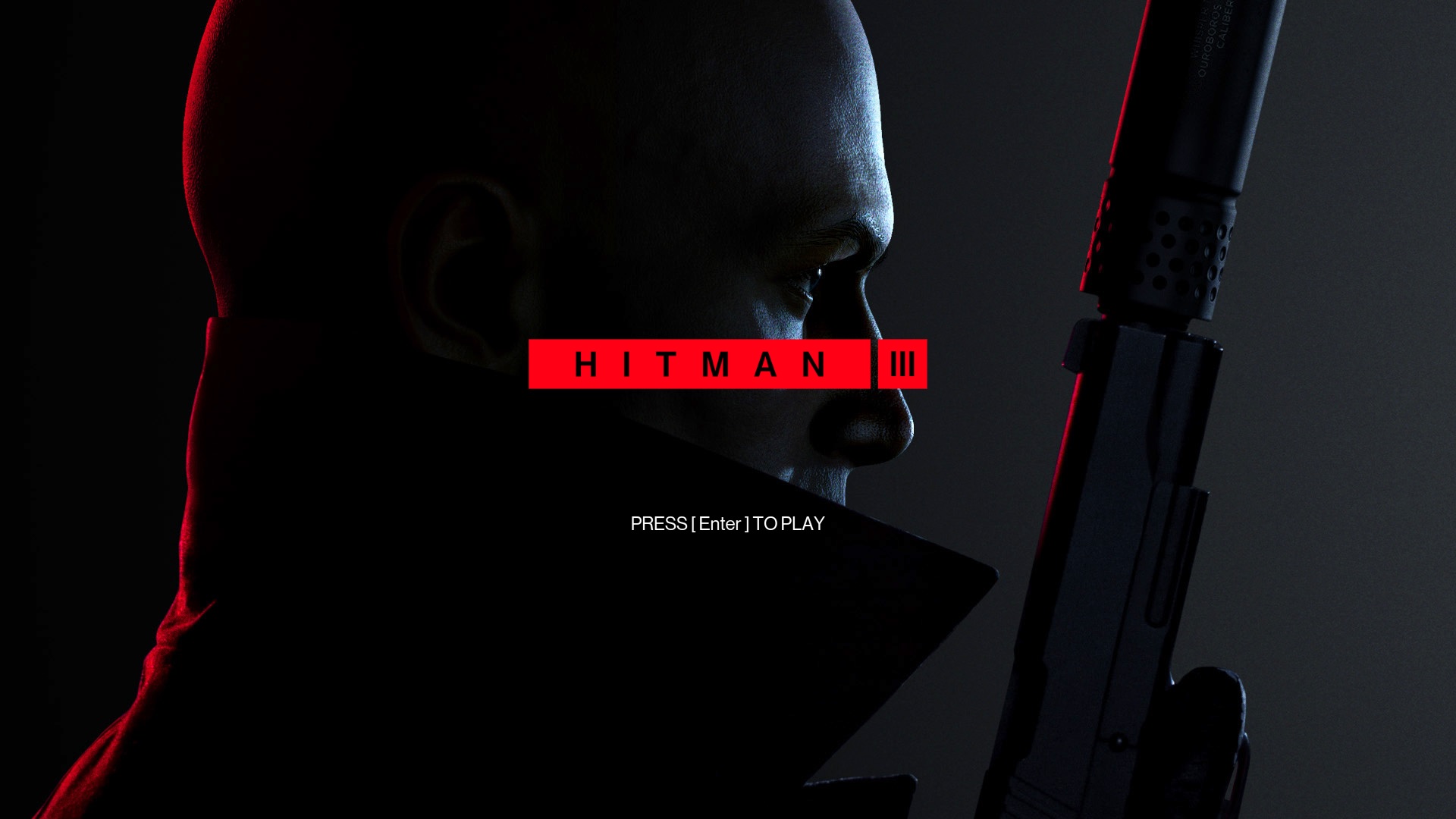
When I first found out about the Hitman series reboot, it seemed very much up my alley. Hitman is a stealth assassination game whose main gameplay loop is to find a set of clothes that will get you into a restricted area, get to that area, and then repeat until you're able to get to your target, kill them, and escape the level. Hitman's first game consists of six huge levels with countless assassination opportunities in each level, and encourages replay with an in-game checklist which recommends different types of kills. It emphasizes comedy and player agency above all else.
My early experience with this game series was attempting to 100% each level's objectives before moving on to the next level - which took a very long time. Early in the year, when Hitman 3 released, I decided to finally run the trilogy, playing each level once and then progressing to the next one in order to sample all of the levels and experience the full story. I played through about twenty levels across three games in quick succession, which was an incredible narrative and gameplay experience.

Hitman 3 kept me coming back for months afterwards, too. In addition to the massive checklists, IO Interactive continually released new limited-time targets over the course of the year, as well as special in-game events. I was addicted to the gameplay of Hitman 3 for months, finally falling off sometime in June.
Hitman 3 couldn't quite retain its GOTY crown for a couple of reasons. First of all, taken on its own, Hitman 3 is just more Hitman. It's a series of incredible twists on the formula, don't get me wrong; each level seems to be an attempt to adapt a different genre into a Hitman level. The first level's Dubai skyscraper feels like a Mission Impossible movie, the second level's old British Dartmoor mansion plays like an Agatha Christie novel, the third level's dark Berlin rave party is a John Wick movie, etc. And yet despite the brilliance of the level design, and the fun popcorn twists of the story, all of this *is* essentially more of the same Hitman game I've been enjoying for a couple of years now.
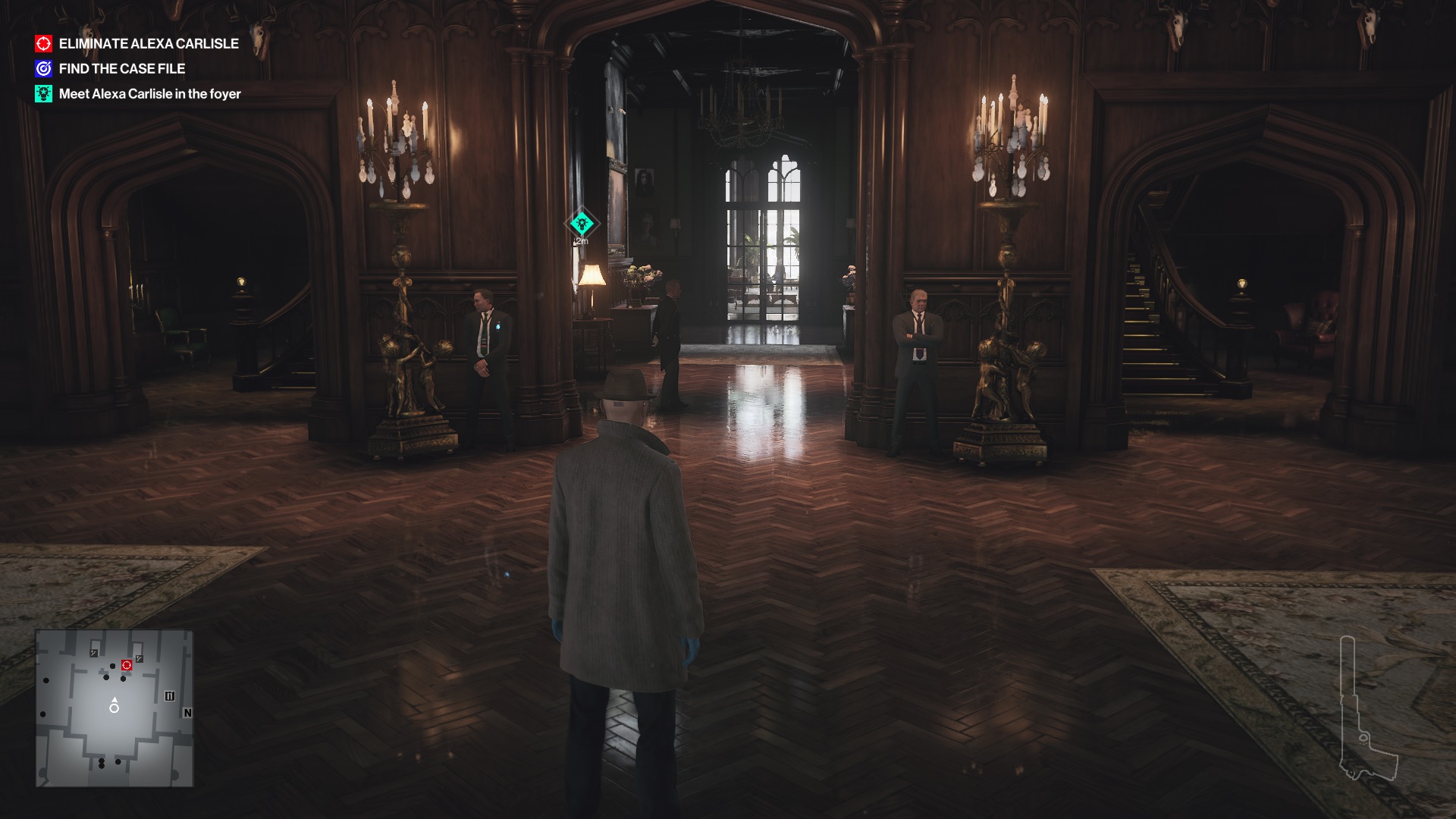
Secondly, even grading Hitman 3 based on the quality of the trilogy as a whole (which I could do, since I experienced most of the trilogy for the first time this year, and Hitman 3 does contain the entire trilogy's levels), there just isn't *quite* enough going on to justify it beating Deathloop or Heaven Will Be Mine. It is a fun and funny stealth open world action game that I will enjoy for years to come, but it didn't quite stick to my soul the way those other two games did. No matter; it's still a fantastic game, and a great conclusion to the trilogy.
#4
My fourth favorite game of the year is the best writing in any game I played this year. (I told you this year's GOTY list was a difficult battle.) The Forgotten City began life as a player-created mod for The Elder Scrolls V: Skyrim, so within the limited gameplay capabilities of Skyrim's engine, writing was really the only card it could play. Still, what a success: The Forgotten City played its card masterfully, unparalleled to any game I played this year.

In yet another of 2021's many timeloop games (others have discussed this phenomenon at length, so I won't get into it here), the protagonist of The Forgotten City is a modern person who finds themself transported back in time to an underground Roman city. There, the player finds that the city's inhabitants are trapped in this city, and if they break an uncertain code they dub "The Golden Rule," all of them will be slaughtered by the city's golden statues. The city's leader has summoned you from the future and created a stable timeloop because he has learned that somebody will break the Golden Rule, and he tasks you with finding out which individual that could be.
From there, the game branches out into a web of possible leads or sidequests, helping you learn about the inhabitants' various problems and hopefully solving enough of them that nobody will break the Golden Rule at the end of the day and destroy their world. As with Deathloop, while there are many different paths, the game subtly guides you carefully through the story while still allowing you to follow your whims.
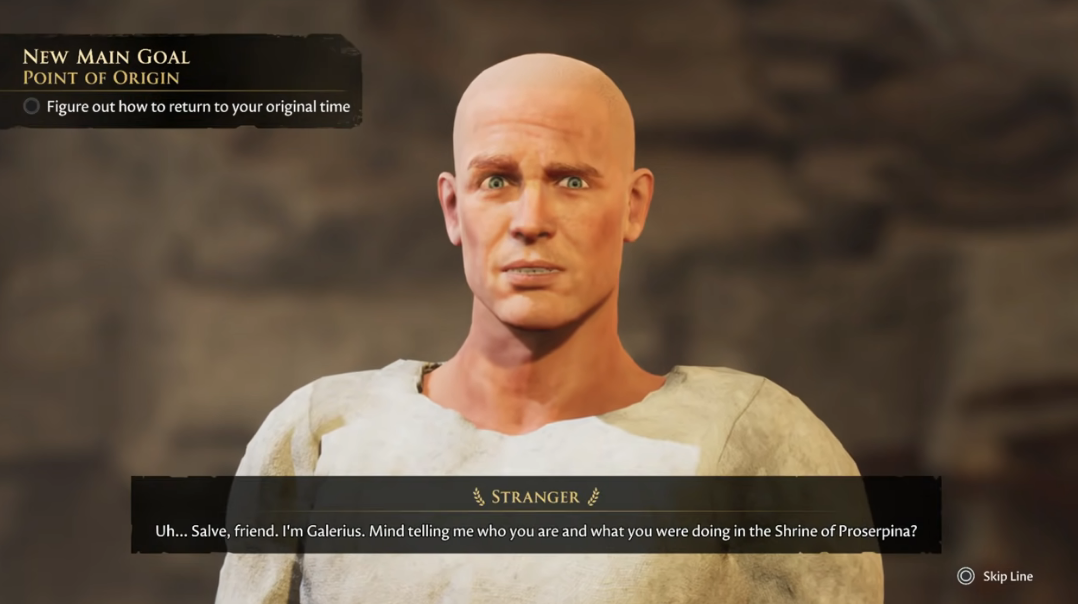
And the characters' stories are very very compelling. The dialogue is all drenched in Greco-Roman philosophy and mythology. I'm reminded of the philosophical dialogues within the puzzle game The Talos Principle - but whereas that game used philosophical discussion as a mode of self-expression, The Forgotten City is telling a very specific story, and wants to alert you to various thinkers and myths that add color to that story.
And what a story it is. Late in the game, The Forgotten City reveals itself to be about the trauma of cultural heritage. As the city's secrets are unveiled, The Forgotten City becomes not just a story about myth and philosophy, but a story about how we treat each other, both on an individual level and on a broader societal level. It's a story about the cycle of history that I genuinely did not expect from something that started as a Skyrim mod, and I'll be thinking about its ideas for a long time.
#5
Lego Star Wars: The Complete Saga is my favorite platformer of the year. No really. Yes, the game from the mid 2000s.
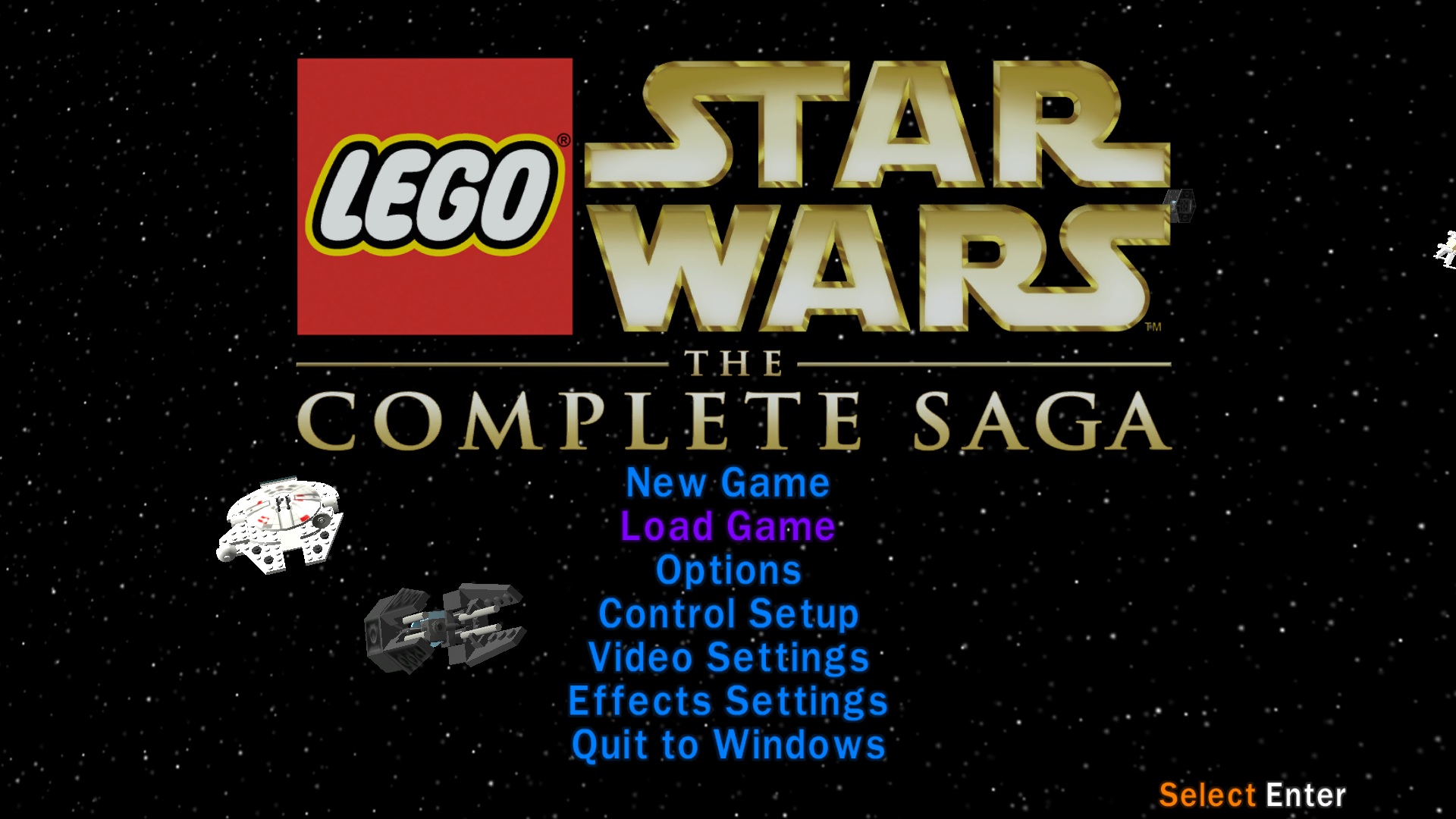
I've enjoyed many Lego games over the last couple of decades, but this year I thought it might be interesting to play all of the licensed Lego games developed by TT Games. I began with Lego Star Wars, originally released from 2005 to 2007. Since it's the first Lego game they made, my expectations were pretty low, but it ended up being easily my favorite of the series.
Lego Star Wars was originally released in 2005 as an adaptation of the Star Wars prequel trilogy, to coincide with the theatrical release of Star Wars Episode III: Revenge of the Sith. After critical acclaim, TT released the immediate sequel the following year: Lego Star Wars II: The Original Trilogy. This game refined and expanded upon some of the ideas of the first installment. A year later, in 2007, TT released Lego Star Wars: The Complete Saga, which bundled together the levels from all six movies and retroactively edited the levels of the prequel trilogy to be more in line with the design of the original trilogy levels.
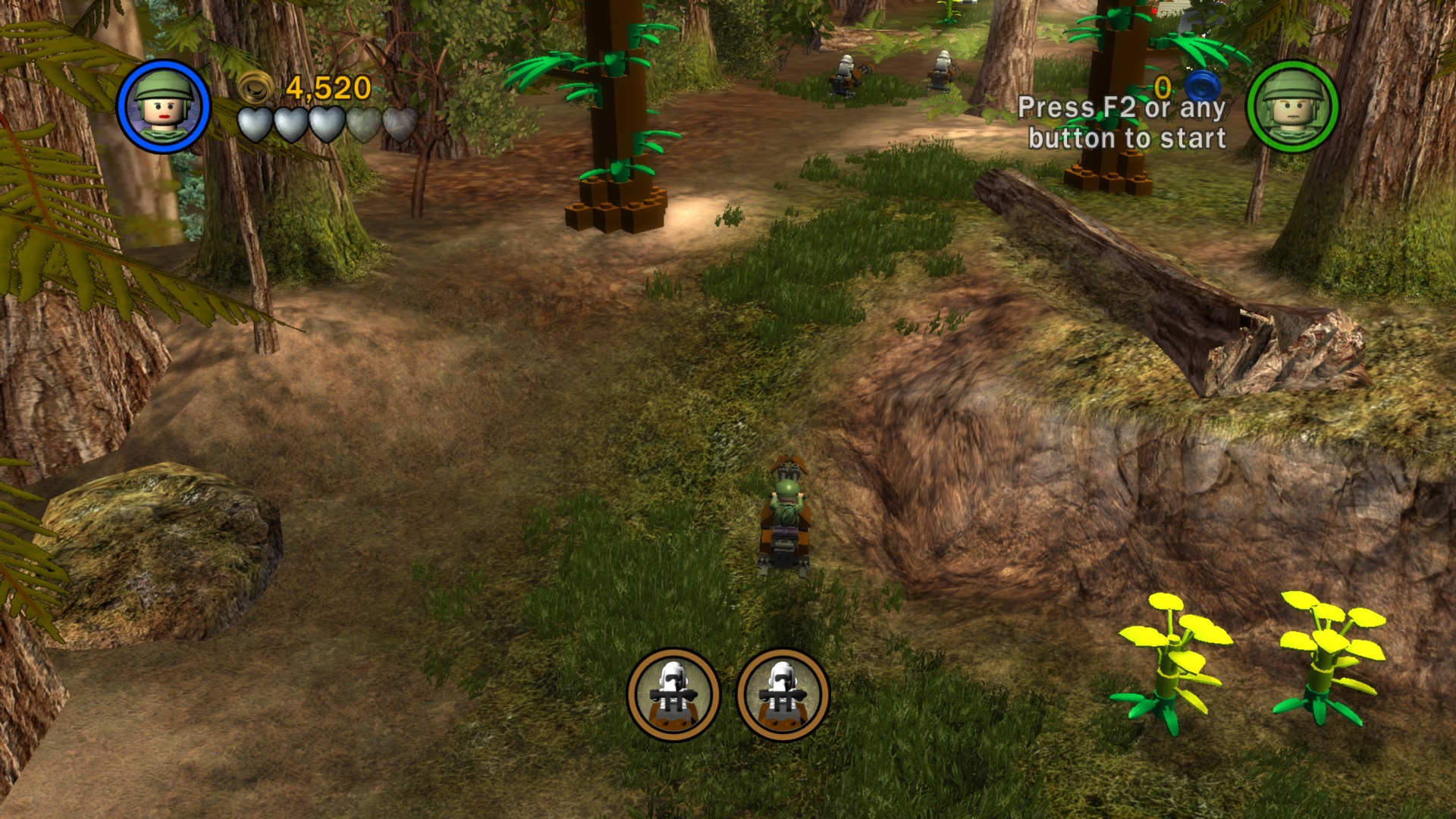
If we presume that Lego Star Wars was in development for a couple of years before the first game's release, then this was effectively a single game that TT developed and continually refined over the course of half a decade. And the refinement SHOWS. The levels of Lego Star Wars: The Complete Saga are all a good length and have plenty to do in them, each one filled with collectibles that help you unlock more and more interesting and varied characters. There's a significant amount of bonus content, and if you go for 100% completion, there's a lot to keep you busy. But it's all incredibly compelling stuff.
After Lego Star Wars: The Complete Saga, TT worked hard to release new Lego games at least once a year, and sometimes multiple times per year. I played further games in the series this year, and they all felt a bit rushed compared to Lego Star Wars: The Complete Saga, all broken in little ways that were never refined in their own game but would be worked on in future games. I think eventually TT made games nearly as good in the mid 2010s, such as Lego Marvel Superheroes and Lego Lord of the Rings, but perhaps not quite as fully realized as the world of Lego Star Wars.
#6
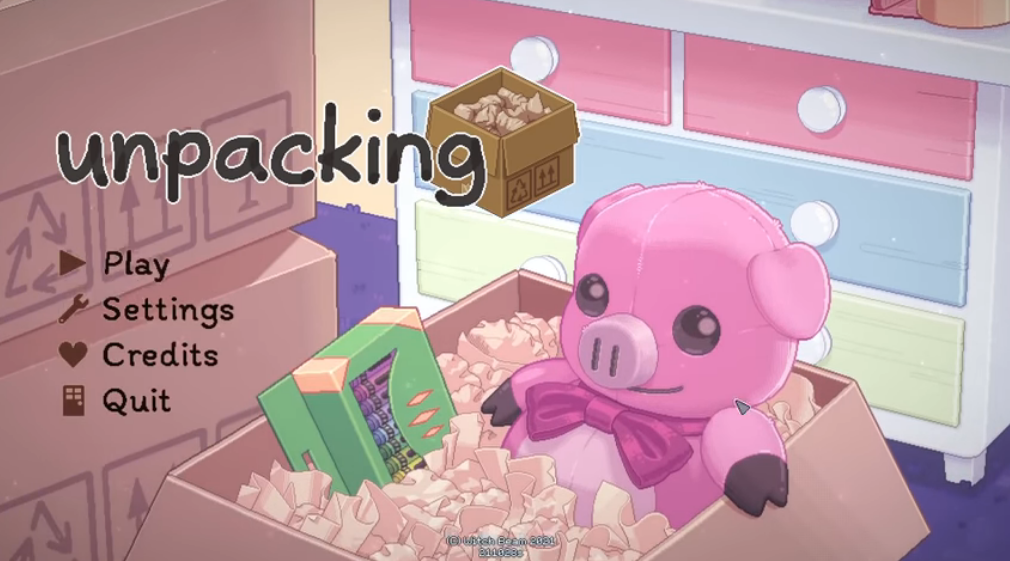
Unpacking is the best short game I played this year, and also the best happy little surprise of the year. (See, everything on the game list is a superlative, this was a tough list!) And here I really have to thank Xbox Game Pass for a second, a game subscription service without which I would have tried fewer games in 2021. It's thanks to Game Pass that I was able to try games like The Forgotten City and Unpacking on a whim, and I adored both of them.
Unpacking has about the coziest game loop you can ask for. It's as straightforward as the title suggests: you are given a room and a bunch of boxes, and it's your job to unpack all the boxes and find a place for all the items inside it. The items range from toothbrushes to tiger plushies, and the levels get harder as you go: first you have a small number of items to unpack in a decently sized room, but later in the story you have accumulated more items, but also you're living with other people and have to find place to stash your stuff alongside theirs.
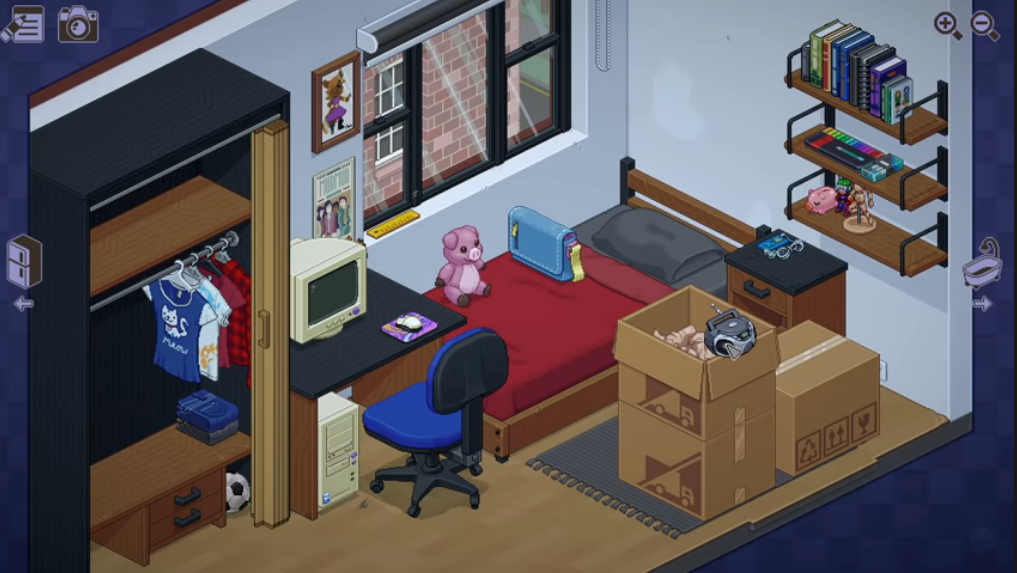
Yes, "story," because Unpacking's slyest trick is that it actually tells a complete narrative from start to finish, just through this gameplay loop. Through environmental clues, it's easy to tell that you begin by unpacking boxes into a dorm room at college, and later into a communal house, and then later into... well, that'd actually be spoilers to say. But it's a sweet little story, and makes some interesting points along the way.
I think the coolest part about Unpacking is that the passage of time it depicts is really familiar to me. As the years go on, the player character collects a large series of fantasy novels, more and more sketchbooks for their job as an artist, and evolving game consoles as technology marches on. This ends up being a poignantly nostalgic picture of growing up over the last couple of decades, and I loved that.
#7
I've read the contemporary typical transgender coming out story in many forms at this point - friends' twitter threads, independently published light novels, even graphic novels. By and large, it is not a narrative that has made its way to the mainstream yet; trans stories in mainstream media are still on shaky ground, mostly because queer creators are drawn to independent publication. So I was incredibly surprised - and moved - to find that trans coming out narrative depicted with incredible sweetness in a game published by a major studio: If Found.
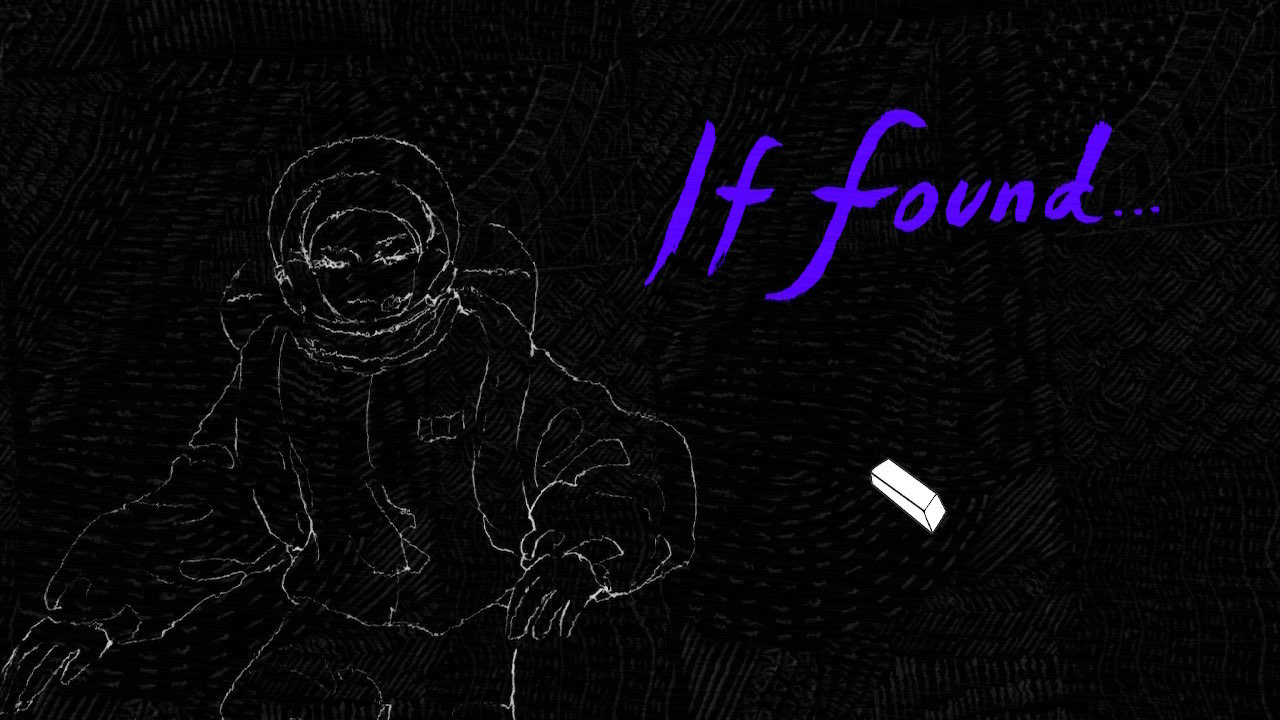
If Found sells itself on its gameplay gimmick. It's a visual novel, but in order to progress the narrative, the player must erase each line and image of the visual novel. There is a genuine in-universe reason for why this is, which is only revealed very late in the story, but the act itself is a bit unnerving: just as you're learning about all these characters and situations, you must erase them, as if the player character is erasing them from their memory.
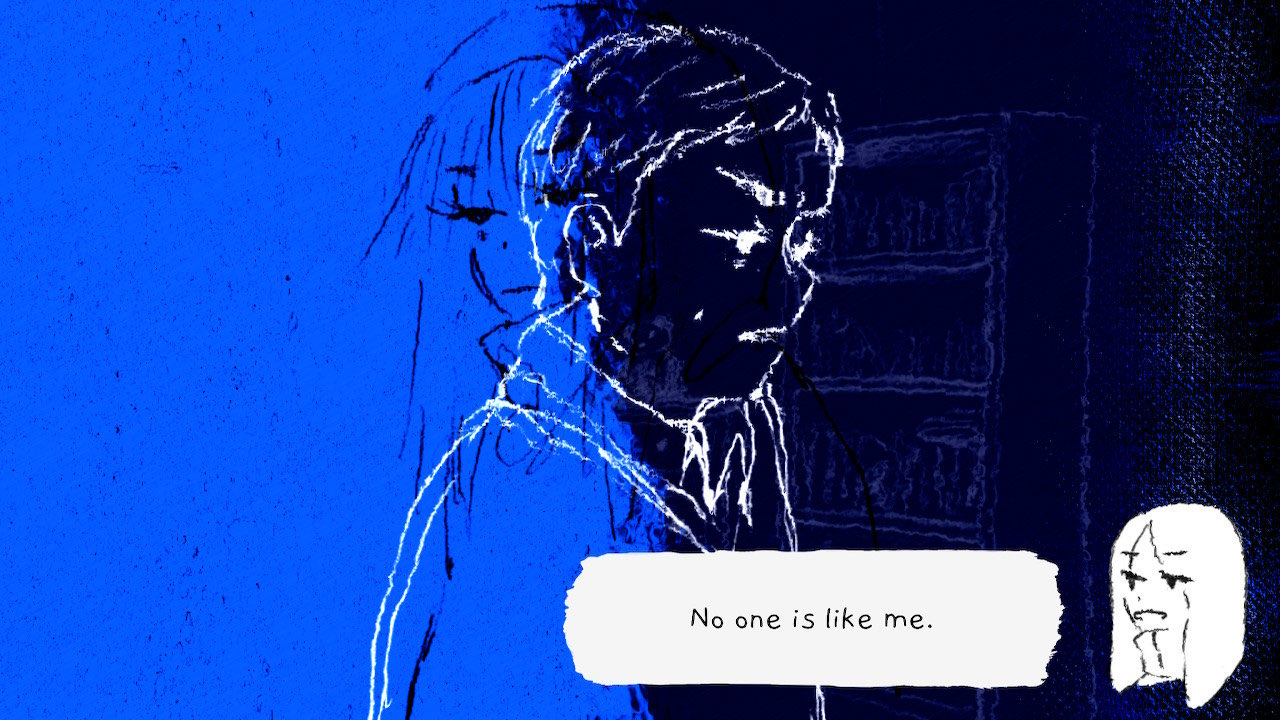
If Found tells the story of Kasio, a young Irish person who has recently come out to her family and friends as a trans woman. As the story opens, she has a fight with her parents about her life choices, and runs away from home. She ends up staying with her friends, and together they decide to start a band.
Kasio's journey, along with her friends, is not an easy one. It's a journey of uncertainty and hardship and poverty. But it's also a journey of joy and self-discovery and love. Most of all, it's about Kasio learning how to live as herself and fully experience life. And the climax of this narrative made me cry a lot. In some ways this story is a little cliche, but seeing it told in this way and on this platform meant more than words can express.
#8
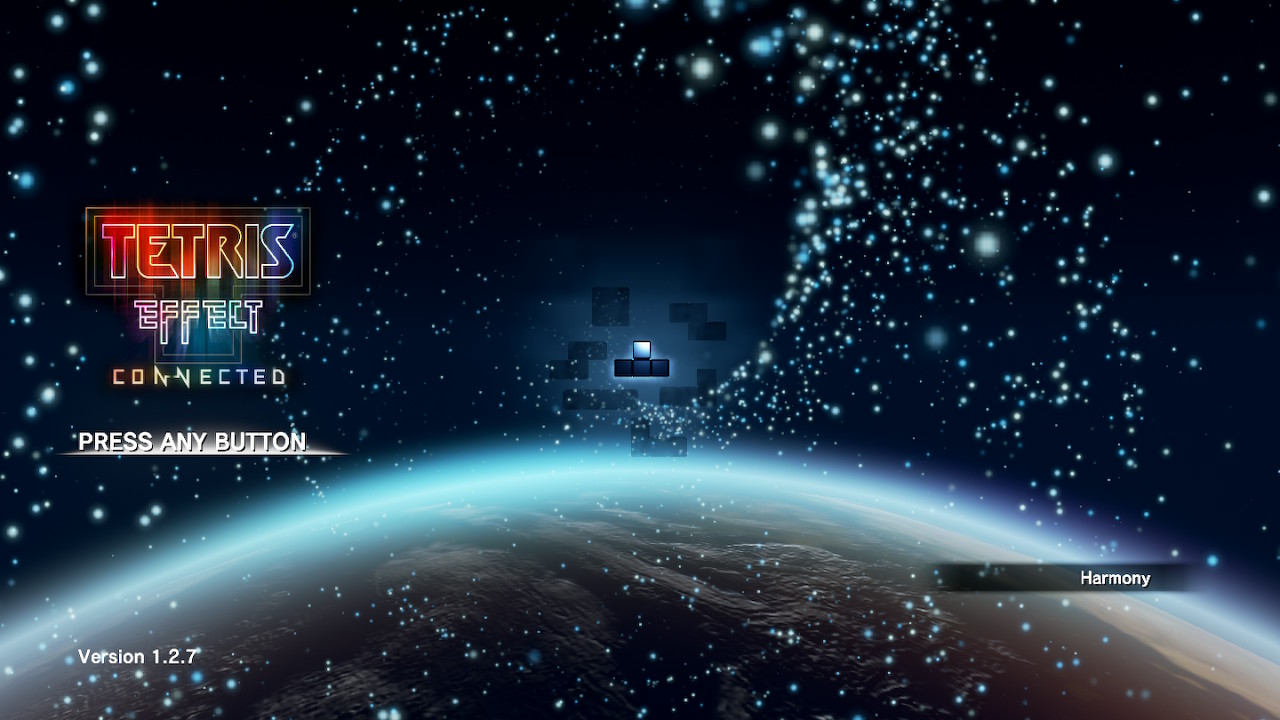
Well it only took three goddamn years!! Tetris Effect Connected is perhaps one of the best modern iterations of Tetris ever made, and I've been waiting impatiently for the game to finally make it to Switch. And here it is, three years after initial launch, and I played it through to the end and enjoyed the hell out of it!! Was that so hard?
Tetris Effect is a highly audiovisual experience that also happens to have a Tetris game inside it. The game of Tetris hasn't changed since the 1980s; there's a couple of extra gameplay gimmicks this time, like the ability to slow down time when your meter builds up, but generally speaking the goal in each stage is to complete a certain number of lines before time runs out, as tetrominoes are thrown at you faster and faster.
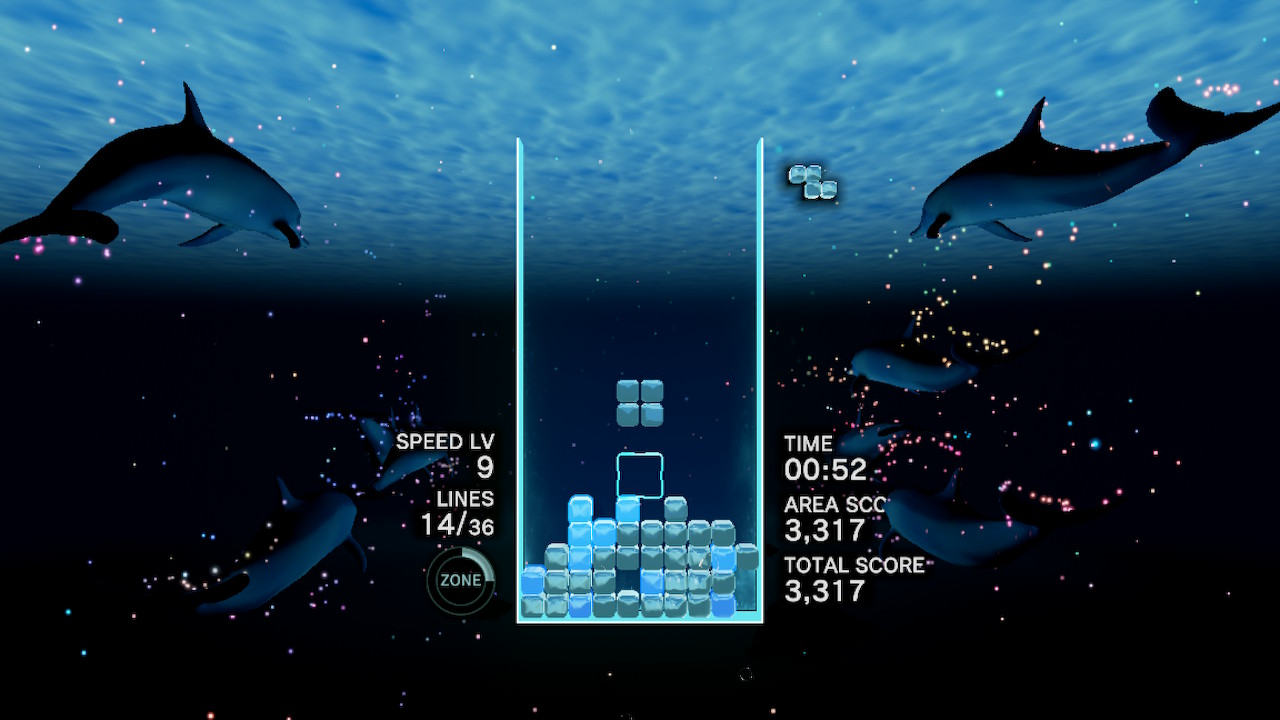
What makes Tetris Effect unique is the quality of the experience. Each stage has beautifully generated backgrounds and incredible music that really turns Tetris into even more of a spiritual experience than it already is. In one stage, you might be clearing lines to the sound of dolphins cresting the waves; in another, your line clears might trigger fireworks of celebration.
And this was a quality that the makers of Tetris Effect decided to leverage by releasing it exclusively for, of all things, the Playstation VR headset. Which I'm sure was a beautiful audiovisual experience, but VR isn't that accessible of a platform, and the Switch had already been out for a year and a half when Tetris Effect released in 2018. A year later, the Xbox received an expanded version of Tetris Effect that included multiplayer: Tetris Effect Connected. There it stayed, exclusive to Xbox for two whole years. FINALLY, this year, the Switch got Tetris Effect Connected. It's about gods damn time.

Tetris Effect is a beautiful experience. It's also a deeply compelling one; I wanted to get to the end just to see all the stages, and also to see what else it would unlock for casual play. I can't say it's my number one choice for casual Tetris outside of the main campaign, but I loved the heck out of that main campaign, and I'll be replaying it for years to come.
#9
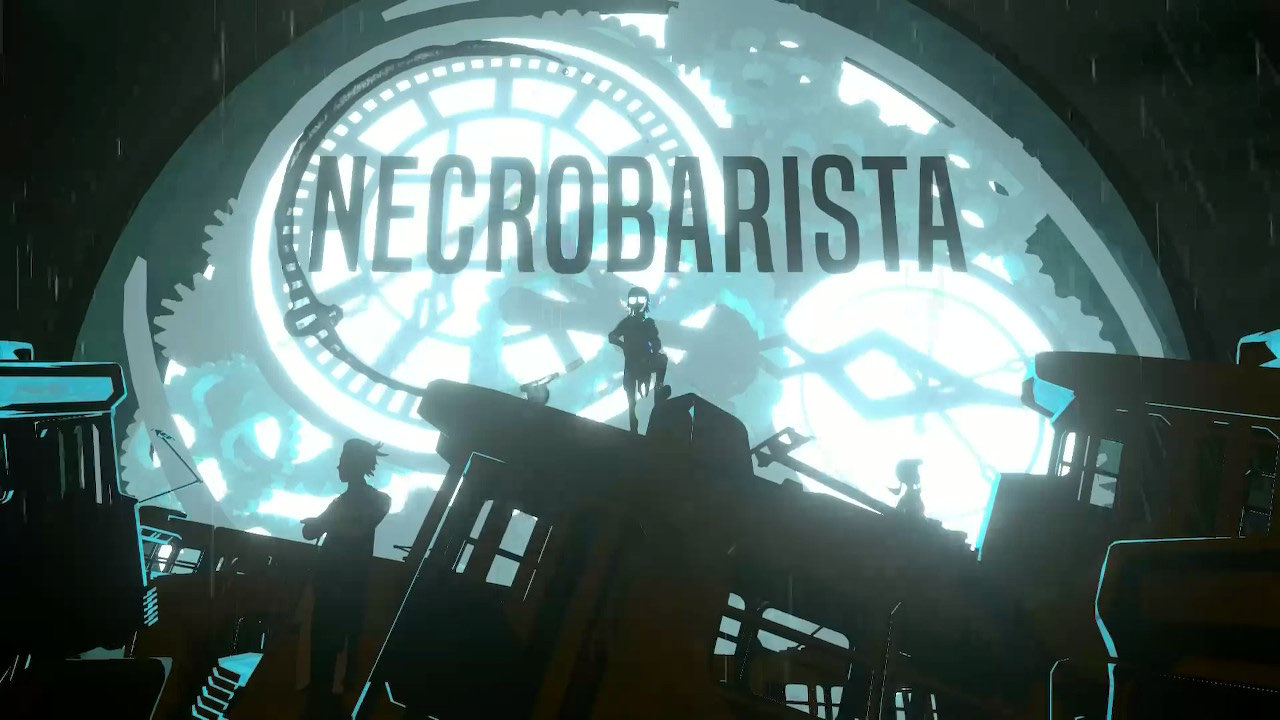
Necrobarista is the third visual novel on this list, and the second one whose major selling point is that it's found a new format for the medium. Honestly, I did not foresee that this many visual novels would make the list. This was not intentional. But I promise that as with the others, this visual novel (flawed as it is) was something that really stuck with me this year.
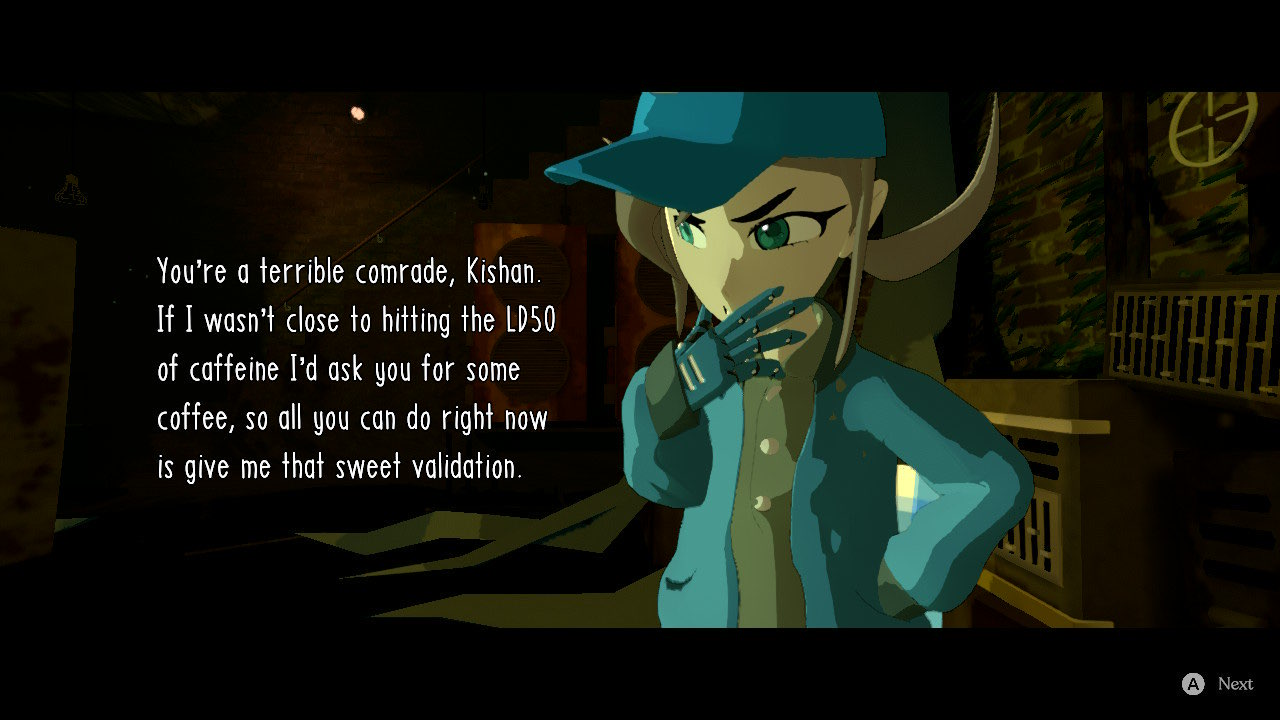
Necrobarista is a story about a coffee shop for the living and the dead. Now, when I heard this, I presumed we'd be getting something like Coffee Talk - a game in which you play as a barista and make coffee drinks in order to progress the story. That was also a visual novel, so it wasn't a stretch to imagine.
No such luck. Necrobarista is a mostly completely hands-off visual novel. The twist this time is that it's not static images and backgrounds, as most VNs are (including every other visual novel on this list). Instead, Necrobarista renders 3D environments in real time and physically places the camera in different angles in the environment in order to tell its story. Every so often, there's an intermission in which you can actually walk around the main coffee shop where the story takes place, and find collectibles that will give you new little side stories.
As innovations go, this idea is cute, but I'm not sure it adds all that much to the story. A little visual flare and a distinctive visual style, sure. But honestly, a lot of visual novels are able to do that without this sort of technology. I was also a little disappointed about not being able to actually make coffee in the coffee shop on the border of the afterlife.
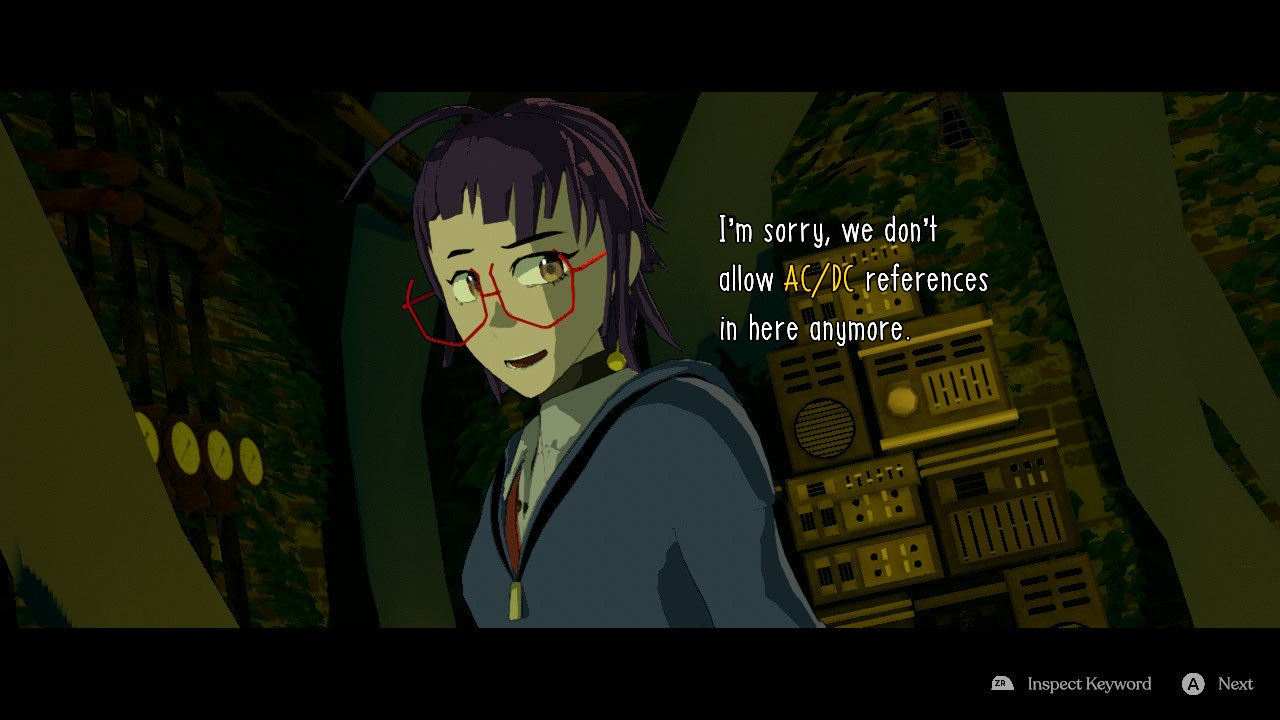
But the story, setting, and characters still intrigued me enough to see Necrobarista through to the end. The story follows both the coffee shop's employees and its visitors. Some of them are alive and some are dead, and nobody can immediately tell that distinction. One of the spirits ends up sticking around longer than expected, and he ends up being the point of view character, giving the player a few days to experience the stories at this coffee shop.
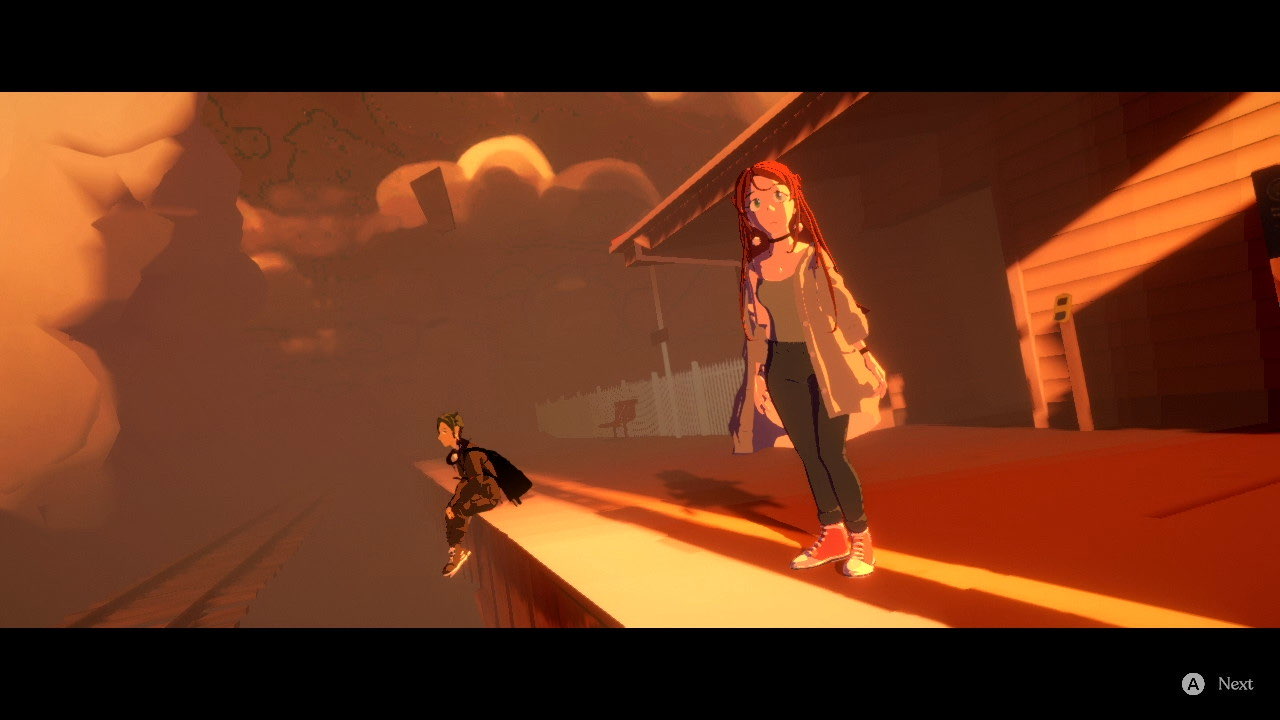
The pacing of Necrobarista is strange, and the character arcs are presented sort of unevenly. Occasionally, the side stories you find are very long and could be their own separate short visual novel themselves; these are generally stories added in DLC since the game's initial launch.
But I adored this game because of how it made me feel. At its core, Necrobarista is about one idea: in this coffee shop on the threshold of the afterlife, its workers have never really figured out how to cope with death. They know how it works mechanically, but they've never had to emotionally grapple with it. Necrobarista chronicles the events which force them to finally really understand what it is they're doing.
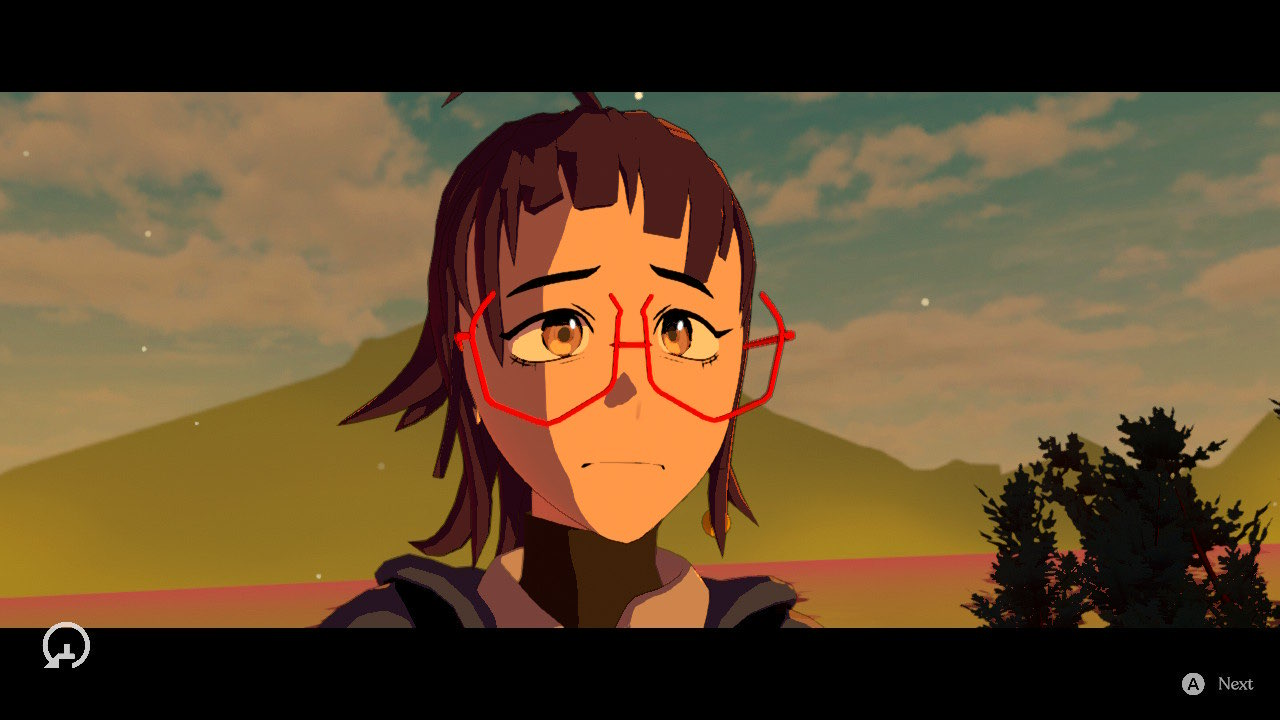
It should come as no surprise, after all the other items on these lists, and after the insane amount of death we've all been faced with in the last two years, that this game haunted me. Its ending is extremely sad and yet extremely beautiful. Necrobarista is flawed as hell, and I don't give a fuck, because the part that mattered - the soul of the game - stuck the landing as hard as it's possible to.
#10
Okay, here it is, the final visual novel in this top ten list. Nearly half of this list is visual novels, and fully half if you stretch the definition a bit and call The Forgotten City a visual novel. Really did not see that coming. But let's press on, because each of these games genuinely earned their spot here, so here's #10: Werewolf The Apocalypse: Heart of the Forest.

Now what the hell is that title, you may ask. "World of Darkness" is a large tabletop RPG setting (similar to Dungeons & Dragons) which encompasses a large group of tabletop RPGs based on monsters and related concepts. The most famous of these sub-settings is "Vampire: The Masquerade," which lets you play as a vampire. But if you'd prefer to play as a werewolf, then "Werewolf: The Apocalypse" has you covered.
Video games have tried over and over again to adapt tabletop RPGs to the video game medium, and generally not with a lot of success. But one major difference between Dungeons & Dragons and the World of Darkness books is that the World of Darkness is much less focused on combat than D&D, and much more focused on narrative. So maybe a visual novel is one of the best possible ways to adapt these RPGs.

Werewolf The Apocalypse: Heart of the Forest is a visual novel about a young woman who finds herself drawn to a mysterious forest in eastern Europe. As she investigates the forest, she learns that it's slated for destruction by a local logging company. She also learns that she has a connection to the local group of hippie weirdos - who also happen to be werewolves.
Ultimately, Heart of the Forest is about how you meet and become initiated into the tribe of werewolves. But the way it accomplishes this is really cool. Heart of the Forest isn't merely a visual novel, with occasional choices one way or another. The choices that are available to you are dynamically adjusted based on a real TTRPG stat sheet, which you can view at any time. And your stats adjust over the course of the game based on your choices, too; based on who you talk with, what you say, and what you do.

The core relationship of the game isn't really between you and your friends, although those relationships are developed. The main relationship is between you and Gaia. On a technical level, this is sort of like your relationship between you and the game itself. But on a narrative level, it's a very spiritual game, and I appreciated the link between shapeshifting and the natural world, which is shifting all the time.